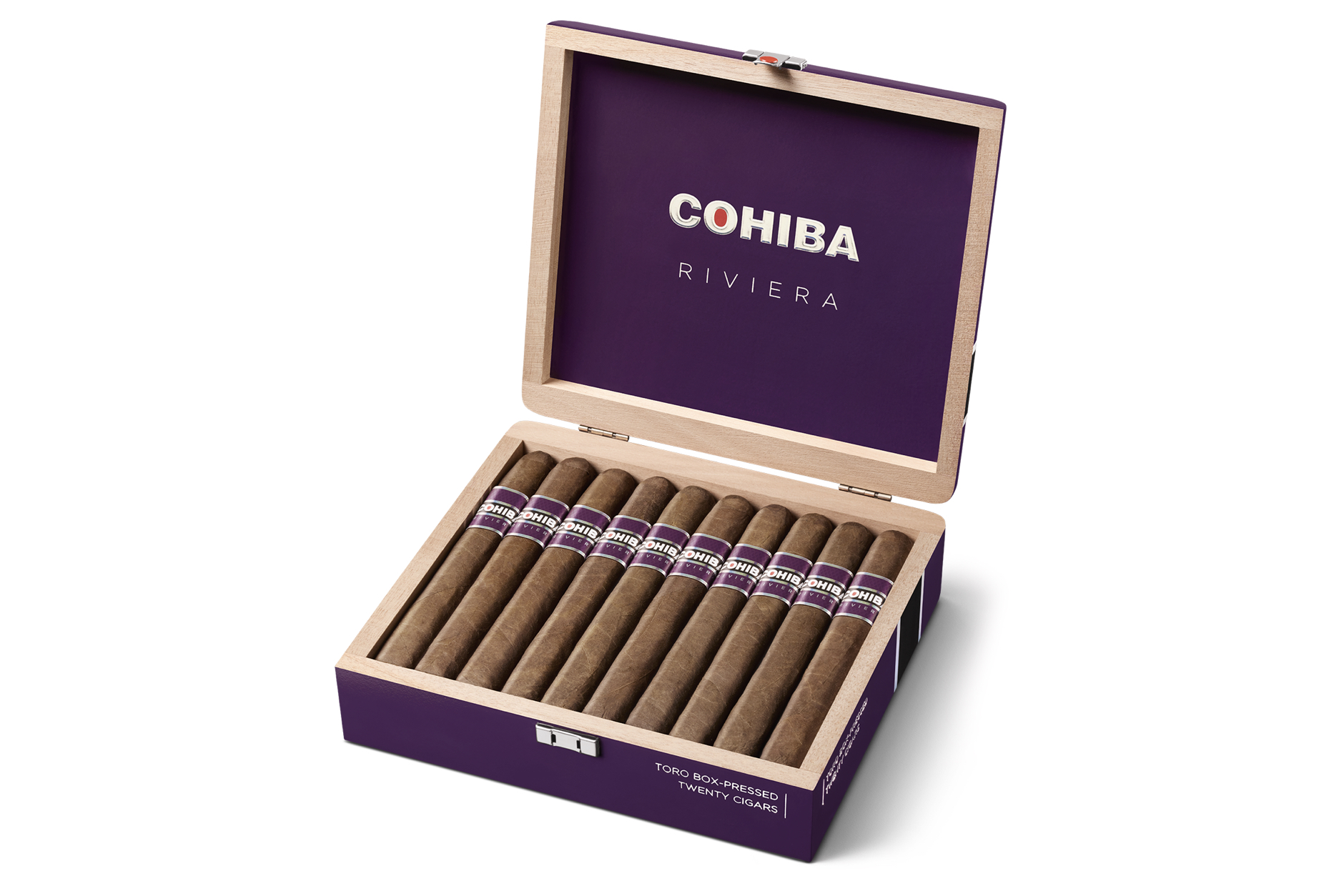The Cohiba Riveria marks two firsts for Cohiba, the most widely-known cigar label in existence. Before going any further, I suppose that I should clarify that there are two Cohibas. There is the Cuban version that Habanos S.A. sells in just about every country other than the U.S., while the other is the non-Cuban version that is sold by General Cigar Co. only in the U.S. The two Cohibas are confusing and also the subjects of a legal dispute that dates back more than a quarter of a century and continues to this day.
That said, I suspect that the Cohiba Riveria is the first Cohiba, Cuban or non-Cuban, that is box-pressed. It is certainly the first Cohiba that uses a Mexican San Andrés wrapper, but that’s not only how this new line bucks the normal recipe for non-Cuban Cohibas. Beyond the Mexican wrapper, there is a Honduran binder and four different fillers: tobaccos from the Jamastran Valley and La Entrada in Honduras and Nicaraguan tobaccos from Condega and Estelí.
Notably not present: Dominican tobacco, a hallmark of General’s Cohiba blends.
Also somewhat different for Cohiba, these cigars are made at STG Estelí in Nicaragua as opposed to General Cigar Dominicana, the factory that typically makes non-Cuban Cohibas. The factory is responsible for the three sizes in the Cohiba Riviera line:
Note: The following shows the various Cohiba Riviera vitolas. Some of these cigars may have been released after this post was originally published. The list was last updated on March 23, 2024.
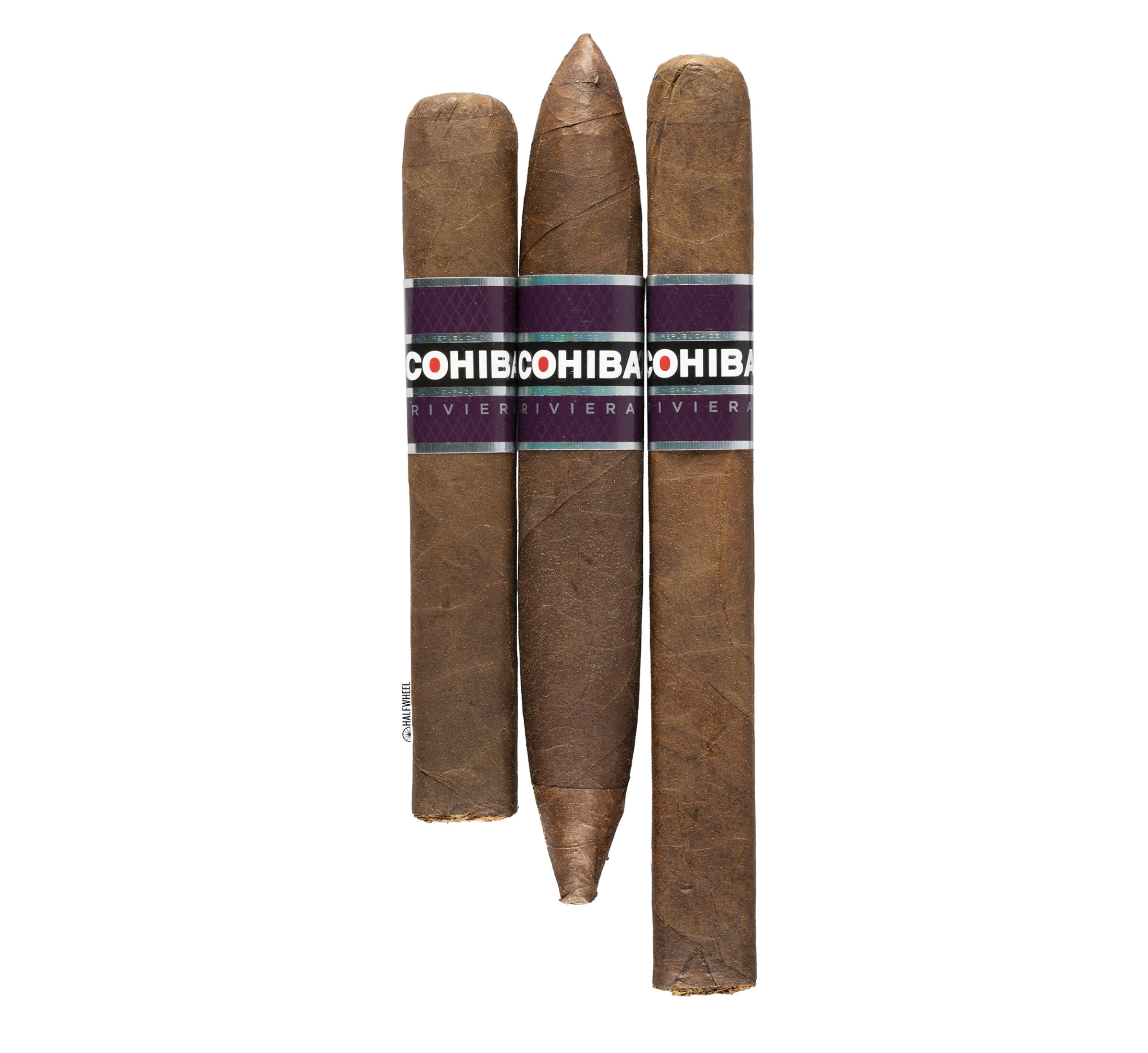
- Cohiba Riviera Robusto (5 x 52) — $19.99 (Box of 20, $399.80)
- Cohiba Riviera Perfecto (6 x 60) — $23.99 (Box of 10, $239.90)
- Cohiba Riviera Toro (6 1/2 x 52) — $21.99 — (Box of 20, $439.80)
- Cohiba Riviera Lancero (7 x 38) — $14.99 (Box of 15, $224.85)*
*Not pictured
84
Overall Score
Of the combined nine thirds I smoked of the Cohiba Riviera Perfecto, I made it through just one without a combustion issue. That's a problem. It's a problem for the score, it's a problem for my overall thoughts, it's probably a problem for the flavor. At times, the Cohiba Riviera can deliver a smooth and enjoyable profile, other times a unique and vibrant horseradish flavor attacked my palate in a way that I found enjoyable. While not the majority of the time, too often I found myself fighting the cigar. If you are considering buying these, I'd recommend the two other, more pedestrian-looking vitolas.
“Cohiba Riviera is a bold yet balanced blend of the most exceptional tobaccos from Nicaragua with exclusively-grown tobaccos from Honduras,” said Sean Williams, brand ambassador for Cohiba, in a press release when the cigar was announced. “Medium-to-full bodied and adorned with a delectable wrapper from Mexico, Riviera is an elegant selection offering notes of dark chocolate and coffee bean with a hint of leather and subtle cream on the finish.”
The Cohiba Riviera shipped to stores on May 2.
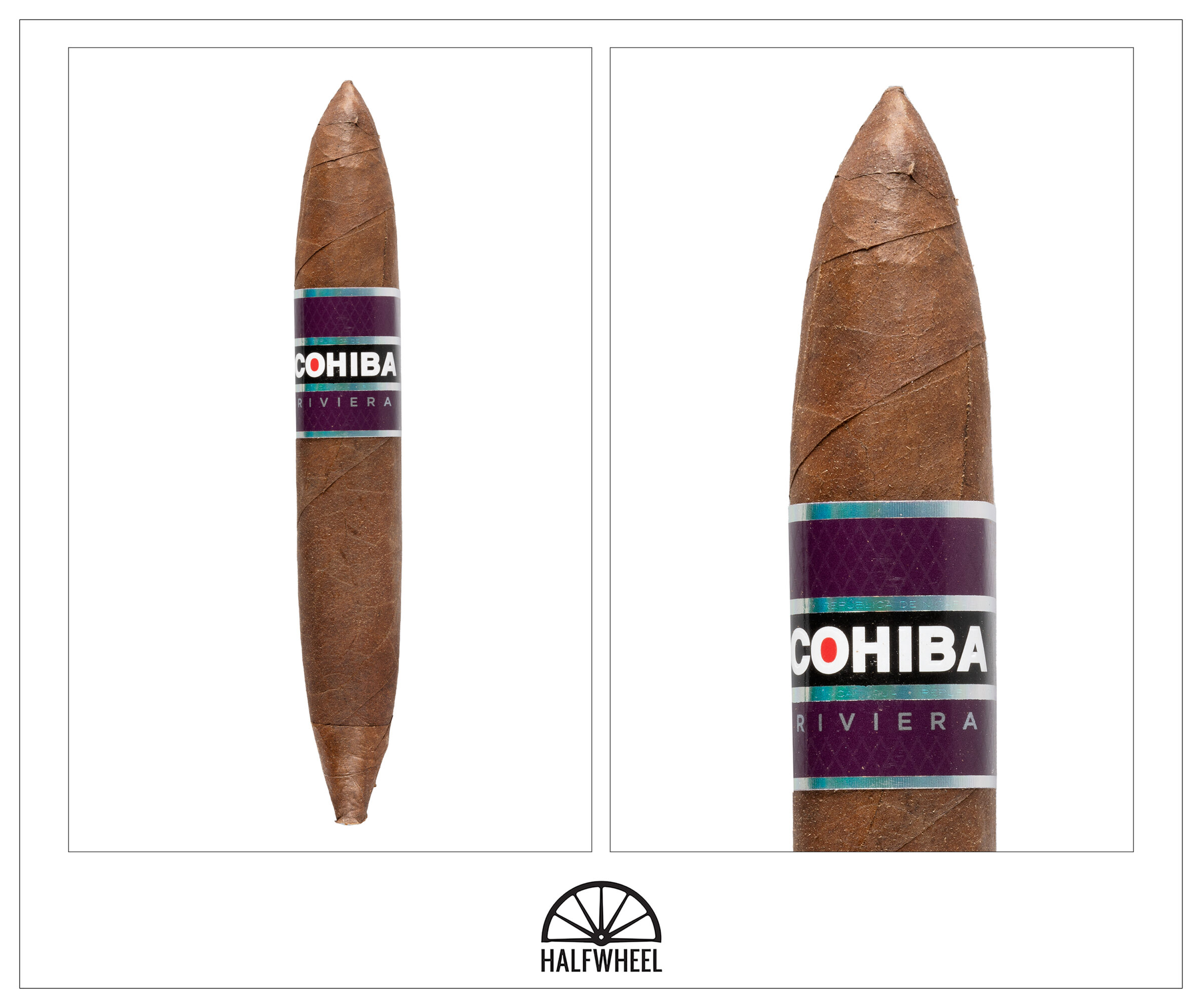
- Cigar Reviewed: Cohiba Riviera Perfecto
- Country of Origin: Nicaragua
- Factory: STG Estelí
- Wrapper: Mexico (San Andrés)
- Binder: Honduras
- Filler: Honduras (Jamastran Valley and La Entrada) & Nicaragua (Condega and Estelí)
- Length: 6 Inches
- Ring Gauge: 60
- Vitola: Perfecto
- MSRP: $23.99 (Box of 10, $239.90)
- Release Date: May 1, 2023
- Number of Cigars Released: Regular Production
- Number of Cigars Smoked For Review: 3
Unlike most parejo vitolas, there’s not as much consistency from factory to factory about the shape of a perfecto, something that becomes an even wider range when box-pressing gets involved. Still, this is a shape—particularly the elongated taper on the foot—that is rather unique. If I didn’t know any better, I’d guess this shape came from an AJ Fernandez factory. While the wrapper has a dark umber color that hides the veins pretty well, the flat plane of the press counteracts that by making them even more prominent. For the most part, the color is consistent throughout, but the second cigar has a much lighter piece of tobacco used to cover the foot. The aromas from the wrapper are medium-full to full, though I struggle to discern the individual flavors. One cigar smells a lot like damp paper mache, all three have ashy mineral smells and there are signs of toastiness, nuttiness and leather. The foot is either medium or full, combining flavors of chocolate, paper mache, leather and cocoa. The third cigar throughs me for a loop as it’s quite full compared to the other two, which I’d peg as medium-plus at their strongest. Cold draws are medium-plus with lots of milk chocolate over red apple skin, woodiness and unsweetened dates. The firmer I pull on the cold draw, the more bitter it gets.
The first draws of the Cohiba Riviera Perfecto are confusing. On two cigars, I find that the draw opens up noticeably compared to the cold draw, though on the other cigar, it tightens. Flavor-wise, the initial puffs are pretty consistent: lots of earthiness and mineral flavors with secondary notes of sweetness, toastiness, nuttiness, burnt coffee and some mild harshness. While it’s a long list of flavors, I find that they integrate pretty seamlessly with the cigar moving from sensation to sensation every few seconds. After the third or fourth puff, cedar surges to the front of the profile, outpacing the earthiness, which remains a close second. A somewhat restricted peanut flavor—think blanched peanuts versus fresh peanuts—also joins as a secondary flavor, creating a very hearty core. Tertiary flavors include pizza crust, leather, black tea, white pepper and burnt black pepper. While never overwhelming, the bitterness ebbs and flows throughout the first third. The finish is smoother than the main flavor, with nuttiness, cedar and leather leading to generic earthiness, burnt earthiness and black pepper. One cigar has a distinct creaminess during the finish, which is not found on the other two cigars. Pushing smoke out through the nose produces a brief moment of citrus flavors followed by bread, leather and something that reminds me of the smell of strawberry leaves. The finish has Ritz crackers and lots of dry herb flavors—think some sort of seasoning blend—along with pistachios and a distinct horseradish flavor. Flavor is generally full, body is medium-full and strength is medium-plus. With the exception of the second cigar, touch-ups are needed to help with combustion issues on each cigar.
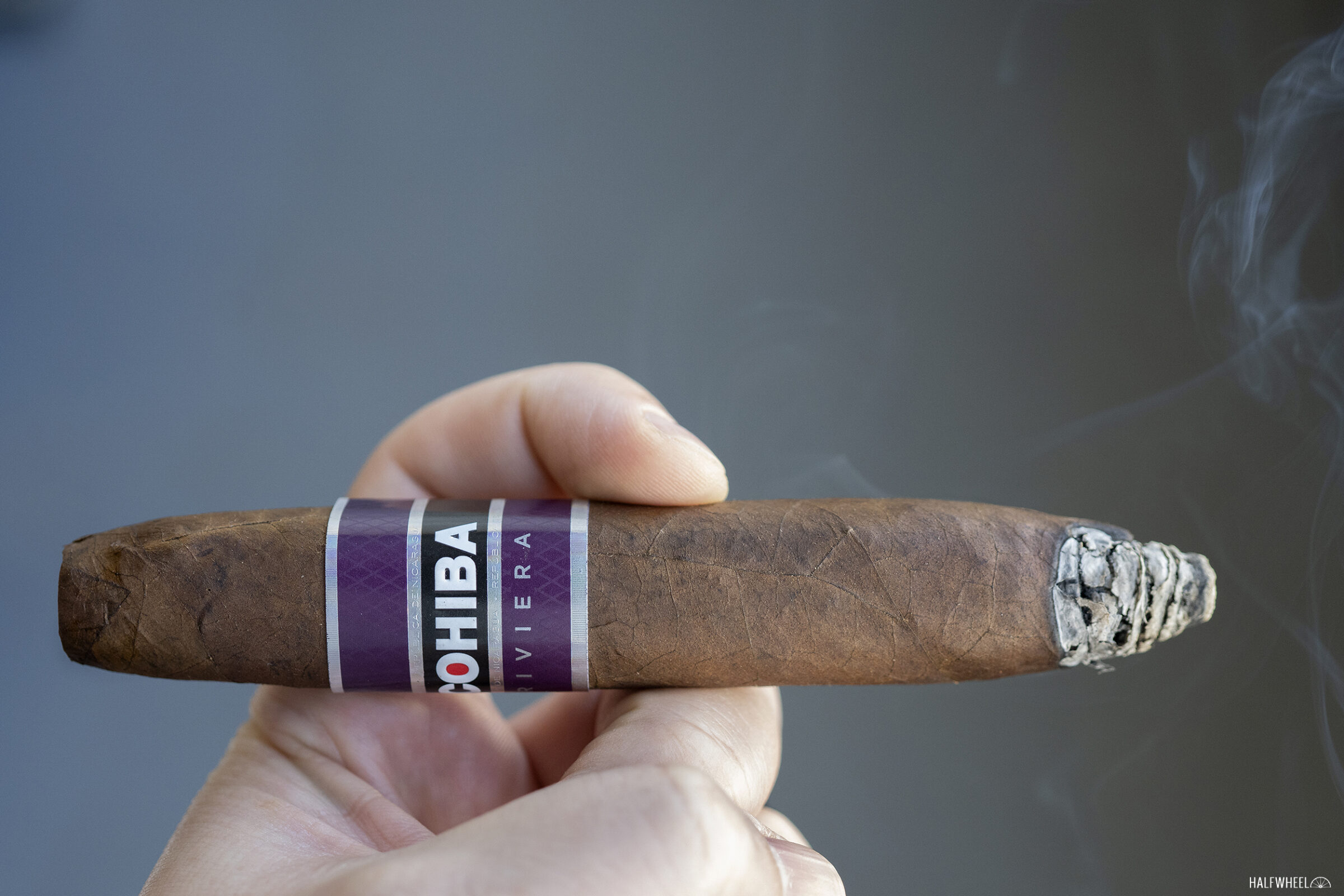
Cedar and earthiness remain at the front of the profile for the second third, though the gap between the two types of flavors has significantly shrunk. What’s not shrinking is the influence of the horseradish-like flavor, which is now a secondary flavor upfront. It’s joined by black pepper, Ritz crackers, dry herbs and black pepper. That horseradish flavor picks up even more during the finish, though contrasted by some creepiness. There’s still some charred earthiness and general earthiness underneath it, along with powdered lemonade and peanut flavors. Most of the puffs during the finish have remarkably intertwined flavor profiles with very little separation between the intensity levels of the individual flavors. Retrohales have meatiness, creaminess and fruitiness, leading to drier woods and some generic earthiness. Horseradish remains part of the finish, though it lacks the bite it has when I find the flavor during other parts of the experience. Roux flavors also soften the bite, with pear flavors and citrus joining the fray as well. I find the flavor on the first two cigars to be medium-full—the third cigar is closer to full—while the body is full and strength is at medium-plus. Touch-ups are now a regular part of each cigar, generally for combustion, though one cigar has a rather uneven burn line. I find the draw on one cigar to have opened up a bit more than I’d like, further exacerbating the touch-up issue.
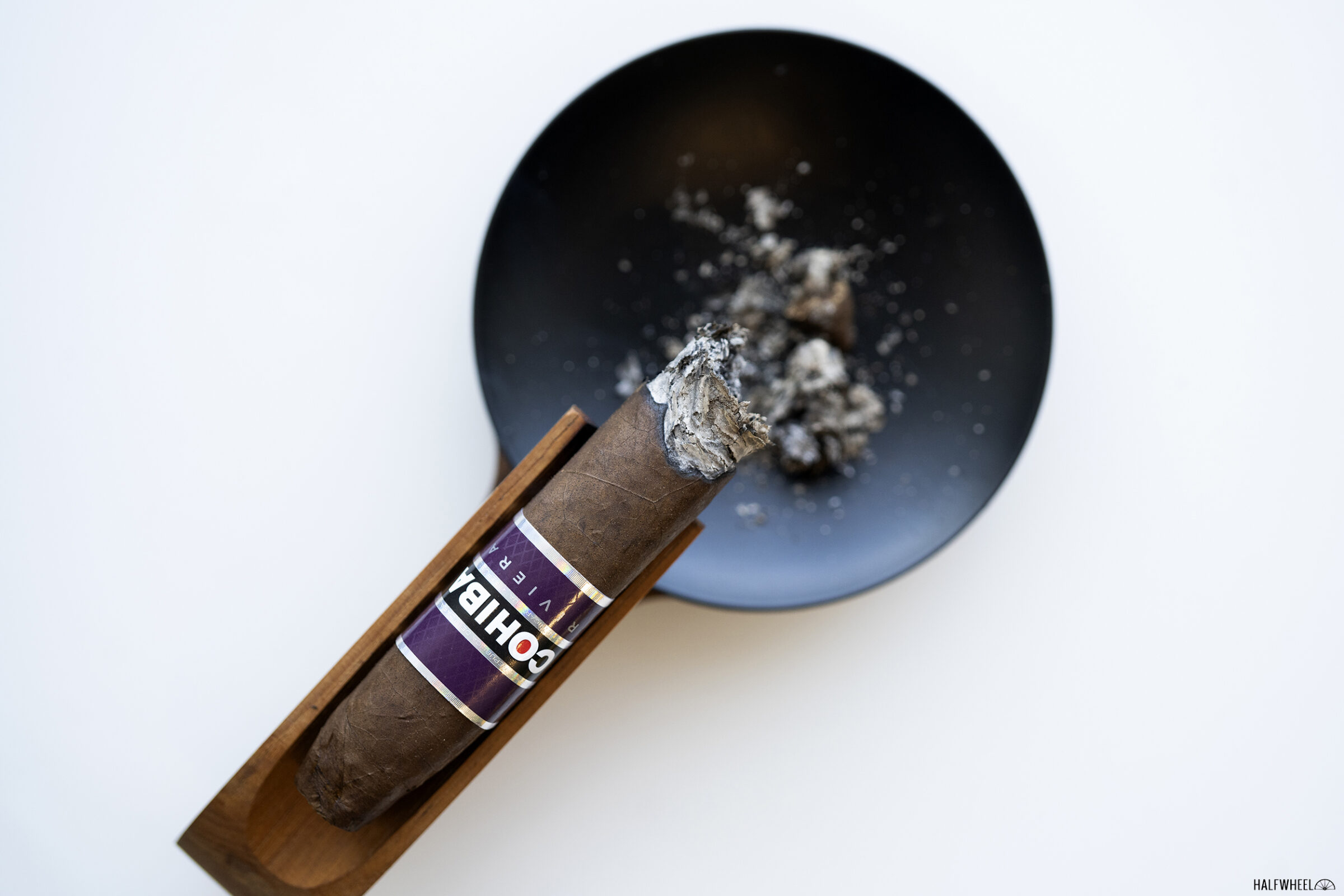
While not as intertwined as the second third, the flavors in the final third of the Cohiba Riviera Perfecto merge enough that it makes it difficult for me to discern each individual flavor confidently. A drier nuttiness and earthiness mix together for the top spot(s), though charred earthiness is becoming a stronger part of the profile. There’s some pretty standard milk chocolate, a barbecue smokiness that reminds me of a smoker full of mesquite wood and a readiness that mixes with the aforementioned herbal flavors to create a bit of a seasoned bread flavor. The finish has dry earthiness over some flavors of damp wood, brown beans, minerals and a touch of saltiness. Retrohales have dramatically changed and have a grape flavor that is somewhere between grape juice and wine. It is joined by unseasoned jerky, herbal flavors, generic starchiness and some mild pepper flavors. The finish has a meatiness, though it’s not quite as pronounced as before, along with earthiness, mineral flavors and a sharp pepper. Flavor is close to full on two cigars and solidly full on the third cigar, while the body and strength are both medium-full. Multiple touch-ups are needed for each cigar, though one cigar—oddly, the one that didn’t have any combustion issues in the first third—goes out completely and needs to be relit.
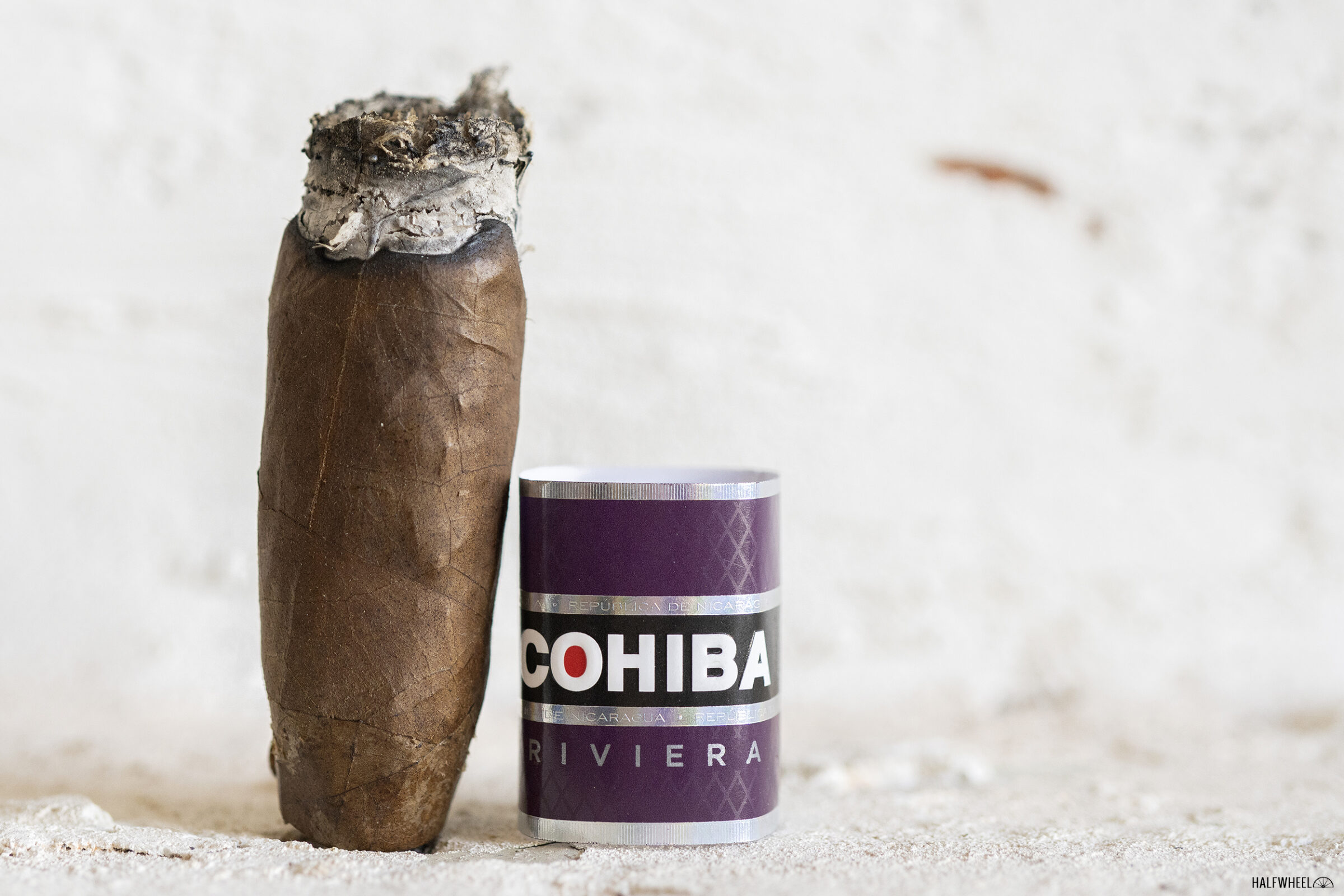
Final Notes
- While this might be the first box-pressed Cohiba and the first Cohiba to use a Mexican wrapper, it’s not the first Cohiba to be sold with purple packaging. More than a decade ago, General Cigar Co. released the Cohiba Edición Diamante.
- For those curious about the state of the lawsuit regarding Habanos S.A., it remains ongoing. Oral arguments were held in early July and the judge is currently considering whether to send the matter back to the Trademark Trial and Appeal Board.
- While the “Cohiba Diamante” might only be offered in the U.S., General sells the non-Cuban Cohiba blends using the “Silencio” name in international markets. In recent years, it seems like Scandinavian Tobacco Group, General’s parent company, has put more effort behind Silencio.
- If you are wondering why the foot of one cigar was lighter in color than the rest of that cigar, it’s because the foot of a perfecto cigar is usually wrapped in a separate piece of tobacco than most of the cigar. To keep the cigar’s appearance consistent, factories will instruct the roller to try to use a cut from the same exact leaf that is on that particular cigar, but some rollers might have a piece of spare wrapper that they are cutting off each time. Furthermore, sometimes the cut might be too small and the roller needs to grab a different piece of tobacco.
- For the longest time, I’ve inspected the pre-light parts—wrapper aroma, foot aroma and cold draw—before smoking each cigar. Of late, I’ve been evaluating the aromas of all three cigars at the same time. It’s been interesting to see much starker differences comparing the cigars side-by-side.
- A few days after I finished smoking the cigars, I was completing this review and was very surprised to see the ring gauge listed at 60. I measured the cigars at 56, 57 and 57 ring gauge. These measurements are done with the HERICS tape, so the discrepancy is not a matter of the cigars being box-pressed. For those wondering, I take the measurements directly below the band unless another part of the cigar is obviously thicker.
- The first two cigars saw their wrappers come undone upon cutting. I ended up trying a different cutter for the second cigar and still had issues. Oddly, the third cigar was cut with the same cigar and was fine.
- While the wrapper coming undone is more than just an aesthetic issue, my issues with construction are 99 percent about combustion. All three cigars needed at least five touch-ups throughout the cigar, including two cigars that needed touch-ups within the first half inch. I’d recommend a dry box just to see if that helps, but the issues seem deeper than just a bit too much humidity.
- It is possible that the combustion issues are not prevalent on the other Riviera vitolas. Given the small opening on the foot, it’s possible that moisture gets trapped in this vitola in a way that does not happen with the parejo vitolas.
- General Cigar Co. advertises on halfwheel.
- Cigars for this review were purchased by halfwheel.
- Final smoking time is two hours and 15 minutes.
- Site sponsors Atlantic Cigar Co., Cigars Direct, Corona Cigar Co. and Famous Smoke Shop carry the Cohiba Riviera Perfecto.
84
Overall Score
Of the combined nine thirds I smoked of the Cohiba Riviera Perfecto, I made it through just one without a combustion issue. That's a problem. It's a problem for the score, it's a problem for my overall thoughts, it's probably a problem for the flavor. At times, the Cohiba Riviera can deliver a smooth and enjoyable profile, other times a unique and vibrant horseradish flavor attacked my palate in a way that I found enjoyable. While not the majority of the time, too often I found myself fighting the cigar. If you are considering buying these, I'd recommend the two other, more pedestrian-looking vitolas.
I am an editor and co-founder of halfwheel.com/Rueda Media, LLC. I previously co-founded and published TheCigarFeed, one of the two predecessors of halfwheel. I have written about the cigar industry for more than a decade, covering everything from product launches to regulation to M&A. In addition, I handle a lot of the behind-the-scenes stuff here at halfwheel. I enjoy playing tennis, watching boxing, falling asleep to the Le Mans 24, wearing sweatshirts year-round and eating gyros. echte liebe.






